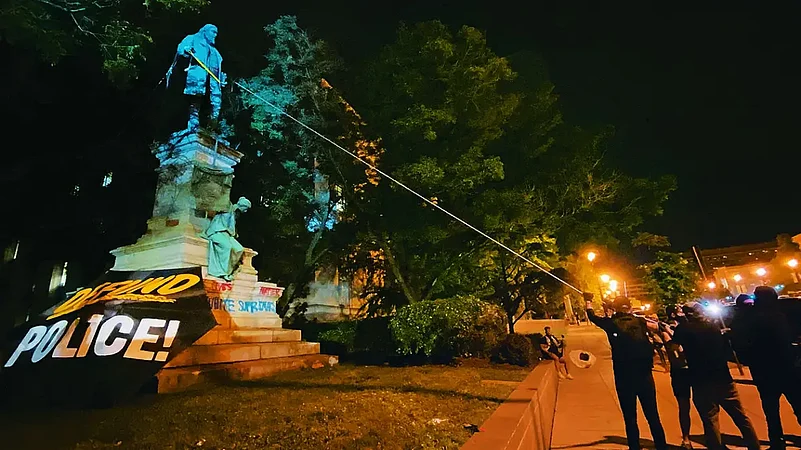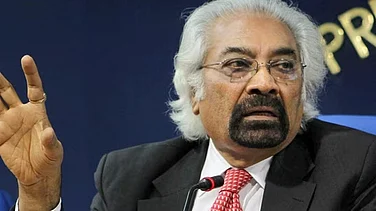In India, we grant equal status to myth and history as records of the past, as vehicles of fact and truth. So, it should come as no surprise that as the nation is being remade, both myth and history have turned into battlegrounds and contested spaces as we seek justifications for our disparate visions of who we are and who we should be in the still young 21st century. The last decade has seen a profusion of reconfigured histories and re-visioned mythologies, almost all of them exclusionary, that have burst the banks of discourse and flooded the plains of our lives—monuments and people, as much as narratives, have become abominations, symbols of past terrors and injustices that must be eliminated. In the quest for national and cultural purity, on the basis of religion, caste and gender, more and more of us are being erased, as fully as possible, from the new narratives.
Advertisement
It is not enough to reduce homes and monuments of greater and lesser importance to rubble. These acts of righteous destruction have to be accompanied by narratives that generate a moral outrage that can be sustained and nurtured. And when the reality of the present proves inadequate to this task, we must seek that which lives in the imagination, a highly combustible space of infinite possibility that combines what we know from experience and what we are told by others. Ironically, it is in the imagination that both fact and truth are established. In a simple (if unsophisticated) formula, school books give us facts, mythologies give us truths. They must be reconstructed together if a new imagination is to be born. Fictions, too, can serve to bolster an imagination that is being formed and nurtured.
Advertisement
For that new imagination to be unwavering and steadfast, other facts and truths which could challenge its assumptions, must be falsified or eliminated. Over the last 30 years, the stories that held us together as a people and a nation have been systematically and insidiously changed. Religious texts and traditions that were so generous in their vibrant diversity, are being crushed into a single, giant monolithic entity. When the fight for the imagination begins with changing the truths that the gods embody, challenging the so-called facts produced by mortals surely has to be child’s play.
The past sits securely in the imagination. It is inaccessible and shadowy, open to reinterpretation and reconstruction, and can be challenged, if at all, only by that unreliable and entirely subjective interlocutor, memory. But as the past recedes further and further from us and from living memory, it becomes more and more the potential fiefdom of anyone who cares to control it. George Orwell’s chilling prescience from 1984 that “he who controls the past controls the future, he who controls the present controls the past” is no longer a warning, because its purported caution has been turned into inspiration and followed up with concerted action.
Advertisement
The 20th century held out the promise of change from that past which strangled and suffocated so many voices and so many dreams—empires were falling, colonialism was tottering, women were on the move, workers and peasants were in revolt, emancipation and social justice were around the corner. But when that bruised century, beaten down by all that it had not delivered, staggered to its close, it left nothing of its dreams. What it did leave behind were its nightmares and its failures, its wars, its genocides, its exterminations. Popular wisdoms about learning from the past, so that we may not repeat it, are plentiful. But the fact is that the past also shows us what can always be repeated with relative impunity—wars, genocides, exterminations. We repeat what we know, for the unknown can lie only in a free imagination.
Advertisement
The past is a dangerous place, if we see it as monolithic, as a single and immutable story that explains the present and determines the future. All over the world, people are questioning what we know of the past, not simply what happened in times that we can no longer access, but also the ways in which we are told what happened. Statues are being toppled, places are being renamed, books of fiction are being withdrawn, rivers change course, migrations are reversed. More and more people believe that we have not been told the truth. Or rather, that what we have been told is not true enough.
Advertisement
Most often, this challenge is a necessary one. We need to question hegemonic discourses, be they patriarchal, colonial or racist (they are often all three). We need marginalised peoples to tell their own stories, to write themselves back into the histories of humanity, to make their voices heard, their brutalised and mangled bodies visible, to represent themselves rather than be represented. Such necessary interventions in our knowledge of the past should ensure plural narratives, not enforce singular ones, they should be additions rather than subtractions, they should point to erasures not create new ones. Yes, we need to re-read and re-think our histories, but the way to correct their mistakes and fill the silences is not to re-write what we have, but to write anew, both more and better. It is to write against the dominant narrative without fear of reprisal.
Advertisement
A hundred years ago, in that hopeful 20th century, it was possible to dream of a mind without fear led by the clear stream of reason. Tagore sought the hitherto unknown to imagine his better world. But those who go back to what we already know for their new worlds, they make sure that the past is repeated—blow for blow, silence for silence, eye for an eye, tooth for a tooth.
(This appeared in the print edition as "The New Battlegrounds")
(Views expressed are personal)
Arshia Sattar works with myths, epics and story traditions of the Indian subcontinent. She teaches at various universities in India and abroad




















